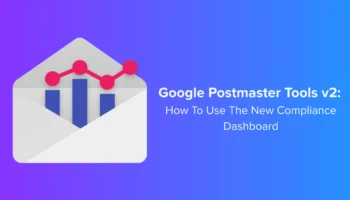We are back with a new blog in our Deliverability Doctors blog series – and this time we are talking about protecting your email deliverability, as well as the potential roadblocks you could encounter! Like every other challenge, sometimes email deliverability problems don’t emerge suddenly. If you didn’t notice the slight changes in the behavior of your email metrics, you are mistaken. Certain events occur before the actual deliverability concerns. In this article, we shall uncover and identify the events that will help you avoid a deliverability problem ahead of time.
Safeguarding Email Deliverability: Uncovering Potential Roadblocks

1. Zero Spam and Unsub Rate:
While marketers always look for minimal spam complaints and unsubscribe rates from their email marketing programs, they should not consider this as a negative ONLY metric. Ideally, when you send a campaign to millions of subscribers, getting a few spam complaints and unsubscribe rates is very much expected. Sometimes it may be an alarming bell when you don’t see any spam complaints or absolutely zero unsubscribe rates. There could be two main reasons for this; either there has been an issue with your Feedback Loops (FBLs) and hence you are unable to see spam complaints, or there have been problems with your overall inbox placement and since most of your subscribers didn’t receive the emails in their inbox, they couldn’t complain. Either of the above cases may lead to deliverability issues if overlooked for any reason.
2. Spamhaus Informational Listing:
While an informational listing itself may not immediately impact deliverability, it can have indirect effects on your email-sending reputation and thus the deliverability. Informational listings are designed to help identify potential senders who exhibit behaviors that are similar to spammers but might not necessarily be engaged in malicious or harmful activities themselves. Let’s take a look at how this may impact deliverability.
Some mailbox providers (MBPs) and spam filters might take into account informational listings as part of their filtering algorithms. While they might not outright block or flag emails from informational listings, they could contribute to an overall assessment of the sender’s reputation.
If you find your IP or domain on an Informational listing, it’s a good indicator that your sending practices might need some improvements. It also is a good opportunity to review your basic email-sending habits, opt-in processes, content quality, and list hygiene; and ensure you are sending only legitimate emails. Being repeatedly listed as informational might lead to further scrutiny from ISPs and spam filters, as a result. Spamhaus could potentially affect your sender’s reputation, which in turn affects where your emails end up – such as in spam or promotional folders, rather than the recipient’s primary inbox.
3. Other Blocklists:
Some email service providers (ESPs) and spam filters might not rely on other alternative blocklists such as SORBS (Spam and Open-Relay Blocking System), Cloudmark, Proofpoint, and others as heavily as they do for the major blocklists, like Spamhaus and Barracuda. However, they could still use these lists as a factor in their filtering algorithms, which might impact email delivery to some recipients. If your IP or domain ends up on such an alternative blocklist due to factors like high complaint rates, suspected spam behavior, spam traps, or poor sending practices, it can lead to lower sender reputation and subsequent deliverability challenges. This means that your emails might face increased scrutiny, get flagged as spam, or experience delays in delivery. You should always consider these with the same priority as others to minimize potential deliverability concerns.
4. Faster List Growth:
Monitoring your list growth rate and identifying your optimal growth rate is crucial. It is advisable not to witness sudden surges in subscriber additions, as this isn’t an ideal scenario. Should such an occurrence arise, conduct a comprehensive audit of the data. Never sacrifice quality for quantity, as this can increase the risk of encountering spam traps, email addresses employed to identify spammers, and eliciting spam complaints. An elevated complaint rate sends a potent message to ISPs that your emails are undesired, ultimately resulting in reduced engagement and diminished overall inbox placement. A sender should think in the same direction while introducing new data points for acquisition.
5. Use Your Email Metrics as an Indicator:
The majority of brands manage to maintain complaint rates significantly below 0.2%. Going beyond this threshold indicates a critical concern. It’s vital to note that assessing complaint rates across all domains can be deceptive, as certain providers like Gmail and smaller mailboxes lack feedback loops, which can lead to an underestimated metric. Monitoring complaints should be done on a per-domain and per-campaign basis. This measurement can also be utilized to assess the effectiveness of new signup sources. In addition to this, measuring engagement deviation would also act as one of the major indicators. A lower click-through rate may indicate that your content is not so relevant to the audience or your email could be on a path towards potential deliverability challenges down the road.
6. Stay Informed About the Industry:
Stay informed about the latest developments in the email industry as well as your vertical and be sure to regularly update your email templates accordingly. In this rapidly evolving landscape, constants such as user devices, email clients, and the growing influence of AI in marketing are in flux. These can consequently impact your marketing outcomes. Therefore, it’s vital to adapt and refine your strategies accordingly. To address this, prioritize well-designed, mobile-friendly email content that should offer readability across diverse screen dimensions, particularly considering the prevalent use of mobile devices for email consumption. A cohesive design not only enhances readability and engagement but also facilitates recipients in comprehending your message effortlessly.
Email remains an indispensable channel of any company’s marketing mix, so email deliverability retains its fundamental importance. It hence needs to be navigated through its challenges and demands with careful consideration and strategic action. The roadblocks that impede successful email delivery can be managed through a combination of best practices, adapting to industry shifts, and constant monitoring, as discussed above. By recognizing the potential setbacks and adopting proactive strategies, marketers can ensure that their emails reach the intended recipients’ inboxes, contributing to improved overall positive engagement, and stronger sender reputation, thus ultimately achieving their goals of email marketing.


